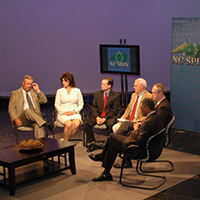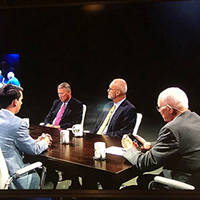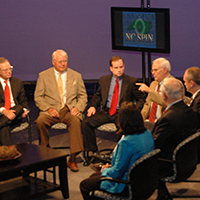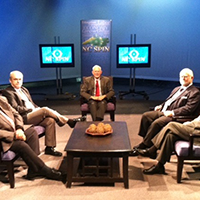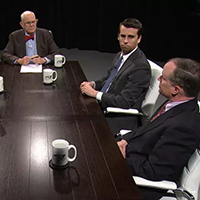The misguided notions behind ‘Liberation Day’
Published 1:14 p.m. Thursday
President Donald Trump declared April 2, 2025, to be “Liberation Day,” with the announcement of a 10% tariff increase on all countries and significant “reciprocal tariffs” on certain countries.
Trump justified these tax hikes by claiming they would “protect American workers” and “drive economic growth for the American people.”
Those goals do indeed sound noble. But are tariffs the appropriate tool to accomplish them?
Trump and other tariff defenders claim that importing affordable foreign goods poses a threat to our nation’s economy. But if that is the case, why does the US government impose an embargo on countries like Cuba and Iran as punishment? By Trump’s logic, embargos “protect” those countries from foreign goods and would be a boon to their domestic economy.
That’s just the tip of the iceberg when it comes to the muddled thinking on tariffs that’s gaining traction today.
When nations, just like individuals or companies, freely trade with each other and allow for each nation to specialize in production in which they have a comparative advantage, output as a whole increases, and there is a greater abundance throughout the world of goods and services that people value.
Protectionist policies like tariffs, however, intend to disrupt that free flow of goods between nations. The intent is to make it more difficult for a nation’s consumers to buy goods produced in a foreign country in order to protect domestic producers from competition. The end result, according to tariff backers, is greater self-sufficiency and more jobs for domestic workers.
But that rationale is incomplete. It simply looks at the easy-to-see jobs protected in select domestic industries. That’s the benefit.
The cost, however, which is more widespread and harder to detect, is no less real and outweighs any concentrated benefits.
For example, say there is a 20% tariff imposed on computers made in China and shipped to the US for purchase. This means that American consumers would have to pay a total of $1,200 for a Chinese computer that sells for $1,000 (the sale price plus the 20% tariff). This would give an advantage to domestic computer manufacturers because American consumers would pay just $1,000 for the same computer if it were made by a company located in America.
Because of this competitive advantage, there would be little incentive for domestic computer manufacturers to improve their efficiency and produce their computers at a lower price. Indeed, they may even raise their price to $1,100 and still undercut their Chinese competitors.
Certainly, the US computer manufacturing industry would benefit. With their Chinese competitors largely eliminated, enabling domestic-made computers to sell at a higher price, more American-made computers would be produced and sold. More workers would be hired, and greater profits would be earned — in that industry.
Computer consumers, however, would be harmed. They would be forced to pay more for computers than they would have to pay were Chinese competitors allowed to compete without the additional tariff on their product. Americans wanting to buy a computer for $1,000 might not be able to do so due to the higher prices.
In effect, tariffs are actually taxes on domestic consumers, not on foreign competitors.
Moreover, we must also consider the harm done to other industries at the expense of the protected industry’s benefit. In this case, the US computer industry would benefit, but in the process it would bid resources like raw materials, machinery, and labor away from other industries.
Then, those other industries would have to shrink their output. Also, because consumers would be paying more for computers, they would have less money to spend on other goods and services. A person having to pay $200 more for a computer as a result of the tariff would now have $200 less to spend on other items like clothes, restaurants, televisions, etc.
As a result, jobs in those other industries would be destroyed. These are the harder-to-detect job losses suffered as a result of tariffs.
There’s also the issue of tariffs making US manufacturing more expensive by raising the price of foreign inputs that are critical to making finished products. For instance, estimates saythat about 60% of parts used in domestically produced cars come from foreign sources.
To the extent that consumers are willing and able to pay more for finished products, prices will rise. Otherwise, the increased cost of inputs will cause US manufacturers to cut costs elsewhere, and workers will take the biggest hit. Indeed, it is concern over the impact to farmers from the rising cost of crucial foreign inputs like fertilizer and peat moss that has some in Congress asking for exceptions to Trump’s tariffs.
Defenders of protectionist policies, however, will say we shouldn’t worry about the extra $100 or $200 consumers would be forced to pay for their computers. Instead, they will claim, we should focus on how the money being spent on the American-made computers would stay in the US rather than being sent to China for its cheaper computers. But this, too, is an oversimplified view of things.
When an American consumer spends $1,000 on a computer made in China, that money ends up in the hands of the Chinese company and may end up in the hands of its employees. A likely scenario is that the Chinese company and workers will turn around and spend the US dollars on other American-made products. Those American industries that export their goods to foreign nations like China thus see their sales increase.
Therefore, any additional sales by US computer companies made possible by the tariff would be offset by the loss of sales of American companies exporting their goods. Industries that sell a lot of their goods to foreign countries can only thrive if those other nations are successful selling their goods in the US.
For instance, if China were allowed to fairly compete and sells a lot of computers to US consumers, the Chinese companies would receive a lot of US dollars. In turn, they would spend these US dollars buying goods from American companies, say aircraft parts and medical equipment. In short, the more computers the Chinese companies would sell in the US, the more American aircraft parts and medical equipment the Chinese would be able to buy.
By way of example, North Carolina farmers exported $3.3 billion worth of agricultural products to foreign trading partners in 2023. With trade shut off due to tariffs, however, those foreign markets will shrink and cause significant harm to farmers in North Carolina.
Indeed, Trump’s relatively smaller-scale trade war in his first term prompted a $23 billion bailout to farmers and has the USDA already preparing for another.
Much of Adam Smith’s iconic 1776 treatise “The Wealth of Nations” was devoted to dispelling myths and misunderstandings about the nature of international trade. We ignore those lessons at our own peril.
Brian Balfour is the John Locke Foundation's senior vice president of research.


